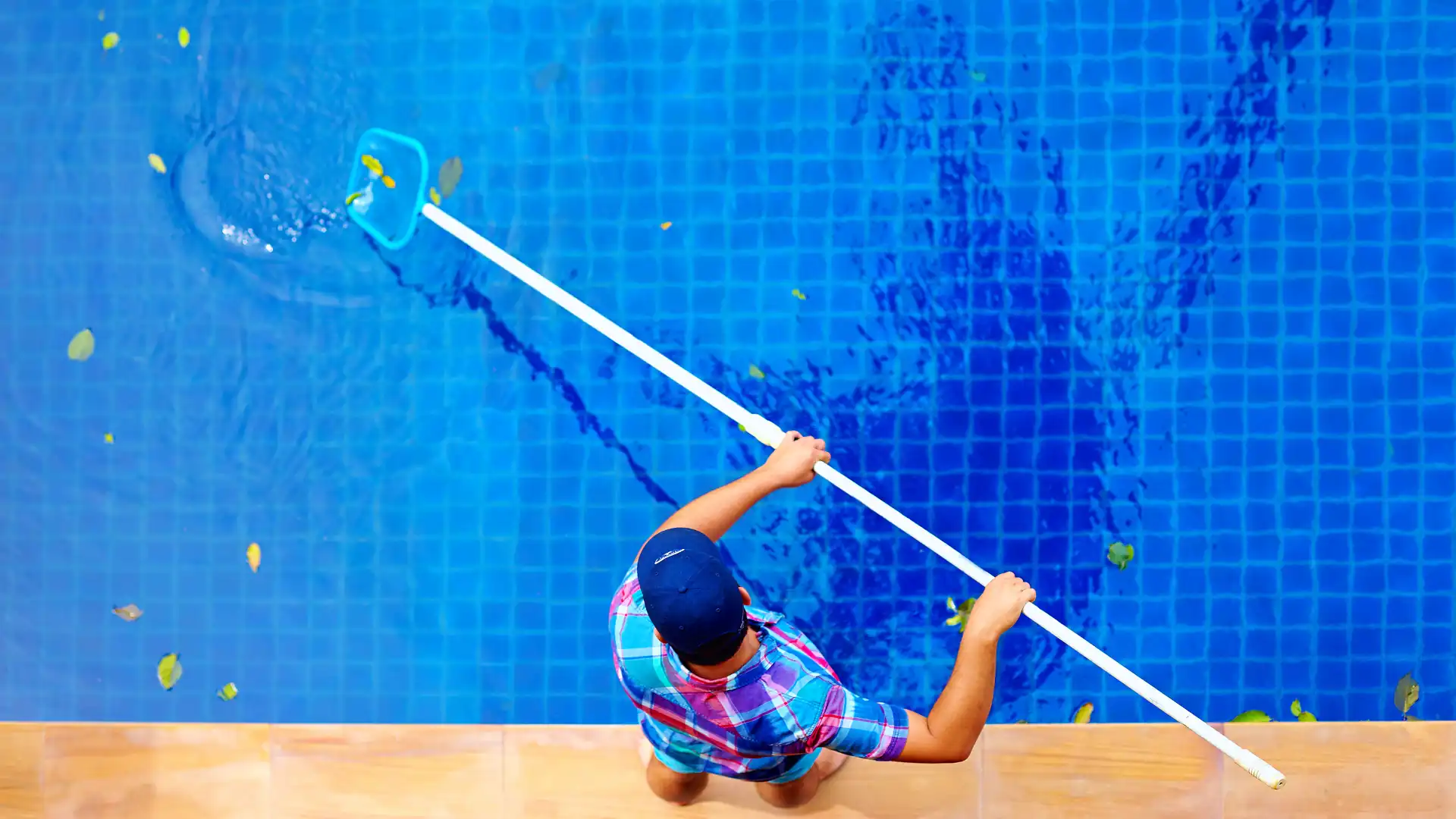
- Categories: Pool Cleaning
How Often Should You Use a Robotic Pool Cleaner
If you’ve recently invested in a robotic pool cleaner, or you’re thinking about it, you might be wondering: how often should I run it? The short answer is: it depends. Your ideal cleaning schedule can vary based on a number of things. In this guide, we’ll walk you through the key factors that influence cleaning frequency, how long each cycle should run, and the tell-tale signs your pool might need a little extra attention.
Factors Influencing Cleaning Frequency
When deciding how often to use a robotic pool cleaner, it’s not a one-size-fits-all answer. Cleaning frequency depends on how your pool is used, what’s around it, and even the time of year.
1. Pool Usage
The more swimmers your pool sees, the more cleaning it needs. Pools used daily, especially by kids or large groups, tend to accumulate more sunscreen residue, oils, and debris. A daily or near-daily clean is ideal if you’re hosting regular pool parties or your family swims every afternoon.
On the other hand, if your pool is only used occasionally, say, on weekends or a few times a month, you can likely scale back to two or three cleans a week without compromising water quality.
2. Environmental Conditions
Where your pool is located makes a big difference in how often you use your pool cleaner. Pools surrounded by trees, shrubs, or open spaces are more likely to collect debris and other bits and pieces, especially in windy weather.
If your pool sits in a debris-heavy environment, running your robotic cleaner every day (or at least every other day) will help you stay ahead of the mess. For pools in sheltered areas or under covers, weekly cleaning may be enough.
3. Seasonal Changes
Your pool’s needs change with the seasons. During summer, when pool usage peaks and debris build-up is at its worst, your robotic cleaner should be used more often, ideally daily or every other day.
In the off-season or winter months, especially if your pool is covered or not in use, you can drop back to cleaning it every 1–2 weeks. Just keep an eye out for buildup in your filter system or cloudiness in the water if conditions shift.
Pool Cleaning Frequency Cheat Sheet
| Pool Condition | Example Scenarios | Recommended Cleaning Frequency |
|---|---|---|
| Heavy Use + High Debris | Daily swimming, pool parties, near trees. | Daily or every other day. |
| Moderate Use + Some Debris | Swimming 2–4 times/week, partial shade. | 2–3 times per week. |
| Light Use + Minimal Debris | Infrequent use, covered or screened pool. | Once a week. |
| Off-Season (Covered Pool) | The pool is not in regular use, covered or enclosed. | Every 1–2 weeks or as needed. |
| Commercial or Public Pools | Hotels, gyms, and schools with high turnover. | Daily (automated scheduling recommended). |
How Long Should You Run Your Robotic Pool Cleaner?
Most robotic pool cleaners are designed to run for 1.5 to 3 hours per cleaning cycle, which is usually enough to clean the floor, walls, and waterline of a standard residential pool. Larger or dirtier pools may require a second cycle, especially after storms or heavy use. It’s best not to overdo it; running your cleaner longer than necessary can lead to unnecessary wear on brushes and motors.
If your model includes CleverClean technology, like the Dolphin M400 for adaptive cleaning, take advantage of it. These features help optimise run-time based on pool size and debris level, saving energy and effort. For most Kiwi pool owners, sticking to one full cycle every time you clean is more than enough to keep your water sparkling without overworking your gear.
Signs Your Pool Needs More Frequent Cleaning
Even if you’re following a regular cleaning schedule, your pool might be trying to tell you it needs a little extra attention. Here are some key signs that it’s time to bump how often you use your robotic pool cleaner:
- Visible Debris Accumulation: If you notice leaves, bugs, or dirt lingering on the pool floor or floating on the surface after your usual cleaning cycle, your current schedule might not be enough.
- Cloudy or Murky Water: Clear water is a sign of a healthy, well-maintained pool. If things start to look dull or hazy, it’s often due to fine particles or poor circulation, which your robotic cleaner can help manage with more regular use.
- Algae Growth: Green patches on the floor or walls are a red flag that algae are starting to take hold. This sign typically means your pool isn’t being cleaned often enough, or the water chemistry is off.
- Unpleasant Odours: A healthy pool should never smell “off.” Musty or chemical-heavy odours can be a sign of poor filtration or water imbalance, both of which are aggravated by infrequent cleaning.
Find the Cleaning Schedule That Works for You
There’s no single rule for how often to use a robotic pool cleaner; it all comes down to how your pool is used and what it’s exposed to. By adjusting your cleaning schedule to match the season, pool activity, and visible signs, you’ll keep your water looking fresh with less manual effort.
Explore our pool cleaning products and keep your routine smooth, simple, and stress-free.
Tag

Hey! I'm Adrian, founder and pool expert here at Dolphin Pacific. I love spending time with family, fishing, and have been known to brew my own beer.


